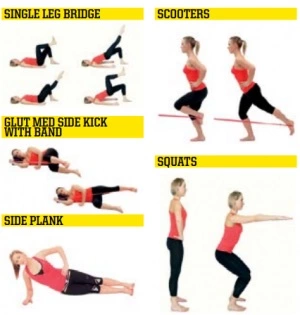Sarah Green explains how to reach peak fitness without getting injured @TriRadar
​Whether you are competing in sprint distance events or an Ironman, we all have one thing in common, to get to the start line injury free. Injuries can derail your training for a few weeks or stop you competing completely. Unfortunately due to our generally sedentary work lifestyles we are at greater risk of injury than ever. From a full-blown injury that requires time off to the occasional niggle, there are three simple steps that can be taken to help prevent this happening.
1. Progress gradually Don’t ramp up your training too quickly, it’s just not worth it. Overload is the most common cause of running related injuries. Whenever you increase your mileage, frequency or intensity of training you are also increasing your risk of injury due to the increased demands put on the body. Be consistent and avoid loading spikes; our bodies take time to change and adapt. For example, if you have had a week away don’t expect to do more than you did previously as large fluctuations increase the load on our joints and soft tissues. Follow the 10 per cent rule and only add mileage and intensity by 10 per cent or less a week, and do not increase both together at the same time. Monitor yourself with a training app to show what you have done each week. Also remember overload is a combination of lifestyle and training, if you have been overloaded at work, this will influence your training too.
2. Recover Listen to your body. It needs time to recover, both mentally and physically. The micro trauma that occurs to the muscles and tendons stimulates further healing and growth, and this can only happen if they’re given a chance to rest and recover. If you start feeling niggles give yourself time to recover by trying a few easier days. Do not be afraid to adapt your training schedule to your needs, you will not lose fitness from taking one day off. Ensure your training programme includes recovery runs at a slower pace, this is an important element of your body adapting to the increasing training demands. Similarly, training aims to improve our nervous system economy and this needs effective nourishment post exercise.
3. Strength and condition We all have areas of weaknesses, therefore an important component of any training plan is to make sure we have good flexibility, core stability and strength. This is particularly important in triathletes because repetitive movements such as running and cycling can result in certain muscles becoming shorter and tighter whilst the opposite muscles become weak and lazy. A dynamic strength and conditioning programme will target specific areas to help stabilise joints, promote postural balance and improve muscle performance and efficiency. It helps the body’s tissues become used to higher levels of loading, enabling them to deal with the increased demands of training and competing, therefore minimising the risk of injury.
TRY THESE TOP 5 STRENGTH AND CONDITIONING EXERCISES TO HELP MINIMISE YOUR RISK OF INJURY THIS SEASON.

